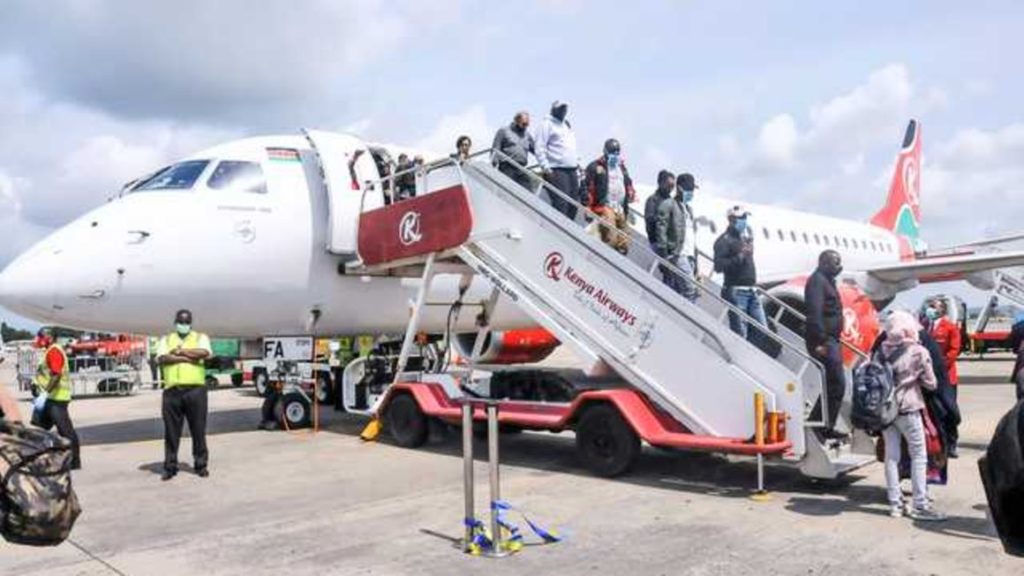Passengers disembark from a Kenya Airways plane. FILE PHOTO | COURTESY Airlines owe $340 million according to Bloomberg. Analysts at McKinsey say combined with the costs of retraining pilots and recertifying aircraft that have been parked for prolonged periods, industry debt could reach $870 billion to $1.1 trillion by 2024.
Fuel constitutes between 25 to 30 percent of the operating costs of an airline.
Speaking during a briefing on Covid-19 impacts on November 3, IATA Director General Willie Walsh said there was minimal risk that rising oil prices would stall the ongoing recovery or air travel, “but the industry has no choice but to reflect the rising costs in the fares.”
International airline lobby IATA says while the recent spike in oil prices was a sign of a rebounding global economy, which is good for business, coming from deep losses and encumbered by debt, airlines are not in a position to absorb the increase.
Airlines owe $340 million according to Bloomberg. Analysts at McKinsey say combined with the costs of retraining pilots and recertifying aircraft that have been parked for prolonged periods, industry debt could reach $870 billion to $1.1 trillion by 2024. Operating costs
Fuel constitutes between 25 to 30 percent of the operating costs of an airline. Meanwhile airports in Europe, facing their own financial crisis because of the downturn, are increasing the fees they charge airlines, adding to operating costs for airlines.
Speaking during a briefing on Covid-19 impacts on November 3, IATA Director General Willie Walsh said there was minimal risk that rising oil prices would stall the ongoing recovery or air travel, “but the industry has no choice but to reflect the rising costs in the fares.”
The price of Brent crude now averages $80 per barrel. Airlines however, have breathing space because of low exposure to the costs of fuel hedging. But rising costs could have an impact on the rate at which carriers bring aircraft back into service.
Walsh said the recovery will continue in tandem with the rate at which travel restrictions are relaxed.
The industry saw a modest rebound with traffic in September improving 3percent over August. Relative to 2019, composite demand for air travel was down 53.4 percent in September 2021, a slight improvement on the -56percent posted during August.
That change was mainly attributable to continuing recovery in Chinese and North American domestic markets. International demand however, continues to weigh down the recovery, at […]
